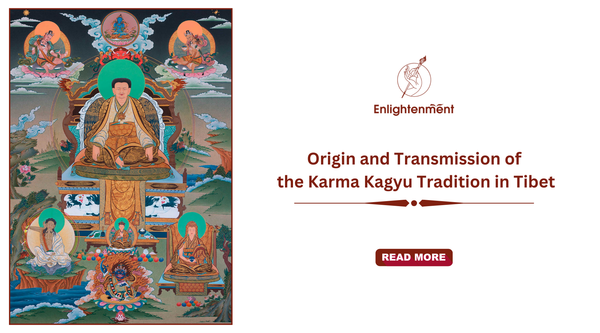"All the dogmatists have been terrified by the lion's roar of shunyata. Wherever they may reside, shunyata lies in wait!"
-Nagarjuna
Buddhism is rich with profound concepts that challenge our understanding of reality. One of the most intriguing is Shunyata, often translated as emptiness. This concept is not just a philosophical abstraction; it is significant in how we perceive ourselves and the world around us. This blog delves into Shunyata's origins, essence, and transformative implications in our daily lives.
What Is Emptiness in Buddhism?
"Shunyata" means "emptiness" and is derived from the Sanskrit word Sunya, which means "empty," "void," or "nothing." The word "sunya," from which this is derived, means empty or void. From the Buddhist perspective, Shunyata is best understood as the emptiness of self-nature and void that will accommodate relations of dependence and mutual dependence.
This understanding of emptiness challenges the extremes of eternalism (belief in permanence) and nihilism (denial of existence). Shunyata is not about negating reality but recognizing its fluid, relational nature. Practitioners can transcend attachment and suffering by seeing that all phenomena are dependent and impermanent.
Nagarjuna and the Philosophy of Śūnyatā: Exploring the Emptiness of Reality

Click here to view Nagarjuna Thangka
Nagarjuna (150–250 CE) is popularly considered a significant figure in the formation of the concept of shunyata. He, a seminal figure in Mahayana Buddhism, profoundly explored the idea of emptiness (śūnyatā), emphasizing that all phenomena lack inherent existence or svabhāva. He articulated that things arise dependently and are interrelated, challenging the notion that objects possess a fixed essence. This perspective leads to the understanding that while things appear to exist, they are ultimately empty of independent nature, highlighting the interconnectedness of all phenomena.
One of the key aspects of Nagarjuna's philosophy is the emptiness of emptiness, which means “even the idea of emptiness isn’t something permanent or absolute—it’s just a way to help us understand that nothing has a fixed, unchanging nature.”
This insight encourages practitioners to recognize self and objects as empty, fostering a transformative understanding that transcends attachment and misconceptions about reality. Through this lens, Nagarjuna promotes a dynamic view of existence aligned with the Middle Way, inviting more profound reflections on the nature of reality and our place within it.
The Relationship to Anatta
Shunyata is closely tied to another fundamental Buddhist concept: anatta, or 'not-self.' Anatta teaches that there is no permanent, unchanging self within individuals, while shunyata extends this understanding to all things. For example, consider how we often define ourselves by our jobs, relationships, or achievements. If someone loses their job or faces rejection, they may feel like they've lost their identity. Shunyata invites us to see that these labels—employee, partner, or successful—are not fixed or intrinsic to who we are.
By recognizing that everything we perceive—objects, experiences, even our thoughts—lacks a permanent identity, we can learn to let go of rigid self-concepts. This realization can be profoundly freeing, helping us embrace life's ever-changing nature with resilience and clarity.
Key Texts on Shunyata
Several essential texts explore the concept of shunyata in depth:
- Articulates the philosophy of emptiness.
- Emphasizes that all phenomena are devoid of inherent existence (svabhāva).
- Focus on the perfection of wisdom.
- Highlight the importance of understanding emptiness for spiritual growth and enlightenment.
- A key text within the Prajnaparamita tradition.
- It is famous for the phrase "form is emptiness, emptiness is form," illustrating the interdependent nature of existence.
- It discusses various aspects of emptiness in detail.
- Explores the implications of understanding emptiness in practice.
- It Relates to the essence of emptiness in Mahayana Buddhism.
- Highlights the significance of emptiness in the context of compassion and wisdom.
These texts collectively provide a comprehensive understanding of emptiness and its central role in Buddhist philosophy and practice.
Symbolic Representations of Sunyata in Buddhist Art

Shunyata is represented symbolically in various forms of Buddhist art, particularly in Vajrayana art. Here are some key symbols associated with shunyata:
- Vajra: A symbol of indestructibility and the ultimate nature of reality, representing the union of wisdom and compassion. It embodies the concept of emptiness, as it is both a weapon and a tool for enlightenment.
- Ghanta (Ritual Bell): Often paired with the vajra, it symbolizes the sound of wisdom and the emptiness that transcends duality.
- Empty Throne: In early Buddhist art, the Buddha was often represented through symbols like an empty throne, signifying his presence and the idea of shunyata—indicating that enlightenment transcends physical form.
- Enso (Circle): In Zen Buddhism, this hand-drawn circle symbolizes the universe's void and the interconnectedness of all things, capturing the essence of shunyata
The Implications of Shunyata
Understanding shunyata has profound implications for how we perceive ourselves and our relationships with others. Here are some key areas where this concept plays a critical role:
Dependent Origination
As a principle connected with shunyata, one of the broad teachings to derive from Buddhism is the concept of Dependent Origination or Pratītyasamutpāda. This principle states that all phenomena arise due to specific conditions and causes.
For example, a flower blooms because of sunlight, water, and soil—none of which can be isolated as the sole reason for its existence. Recognizing this interconnectedness helps us understand that nothing exists in isolation.
Dependent origination reveals how our thoughts and actions are also interdependent. Our emotional states arise from various influences, including —past experiences, societal conditioning, and relationships. Understanding this interconnectedness can cultivate greater compassion for ourselves and others.
Freedom from Attachment
Realizing shunyata can lead to profound personal transformation. When we understand that things are impermanent and lack intrinsic value, we become less attached to them. This reduction in clinging can alleviate suffering and foster a sense of peace.
Consider our attachment to material possessions or status. When we see these things as transient and ultimately empty of lasting significance, we can begin to let go of our need for them. This shift allows us to focus on what truly matters: relationships, experiences, and personal growth.
Not Nihilism
It's important to clarify that shunyata should not be mistaken for nihilism. While it asserts that things do not possess intrinsic essence, it does not deny their existence. Instead, it invites us to see beyond superficial appearances and recognize the fluidity of existence.
Nihilism holds that life has no purpose or worth, whereas Buddhism holds that although things have no intrinsic existence, they still exist in a context that lends meaning. Love and compassion, for instance, are powerful feelings that enhance our lives, even if they are viewed as meaningless according to rigid criteria.
The Interconnection of Sunyata and Compassion
The relationship between shunyata (emptiness) and compassion in Buddhism is deeply interconnected, particularly within the Mahayana tradition. Shunyata teaches that all phenomena lack inherent existence, which leads to understanding anatta (not self). This realization fosters a sense of interconnectedness among all beings, revealing that the boundaries we perceive between ourselves and others are ultimately illusory. When individuals grasp this emptiness, they can transcend self-centeredness and cultivate genuine compassion for others, responding to their suffering with empathy and care.
Compassion (karuna) is seen as a natural expression of understanding shunyata. By recognizing that all beings are empty of fixed identities and that various conditions shape their experiences, practitioners develop a profound sense of equality and kinship with others. This perspective diminishes attachment to a rigid self-concept, allowing for a more expansive view of existence where the suffering of others resonates deeply. In this way, compassion becomes an active response to the realization that we are all interconnected.
The Bodhisattva path exemplifies the commitment to compassion that arises from understanding shunyata. Bodhisattvas dedicate themselves to attaining enlightenment for their own sake and the benefit of all sentient beings. This selfless aspiration highlights how the insights gained from shunyata can lead to transformative actions to alleviate suffering. Ultimately, the interplay between emptiness and compassion enriches Buddhist practice, guiding individuals toward a life of empathy, understanding, and altruism.
Conclusion
Shunyata offers a profound lens through which we can understand reality and our place within it. By embracing the concept of emptiness, we open ourselves to a deeper awareness of interdependence and impermanence. This perspective alleviates suffering and enriches our lives with compassion and wisdom.
As we navigate the complexities of life—be it through personal challenges or societal changes—let us remember the teachings on shunyata as guiding principles for mindful living. By cultivating awareness around emptiness while fostering compassion towards ourselves and others, we pave the way toward greater fulfillment on both individual and collective levels.


